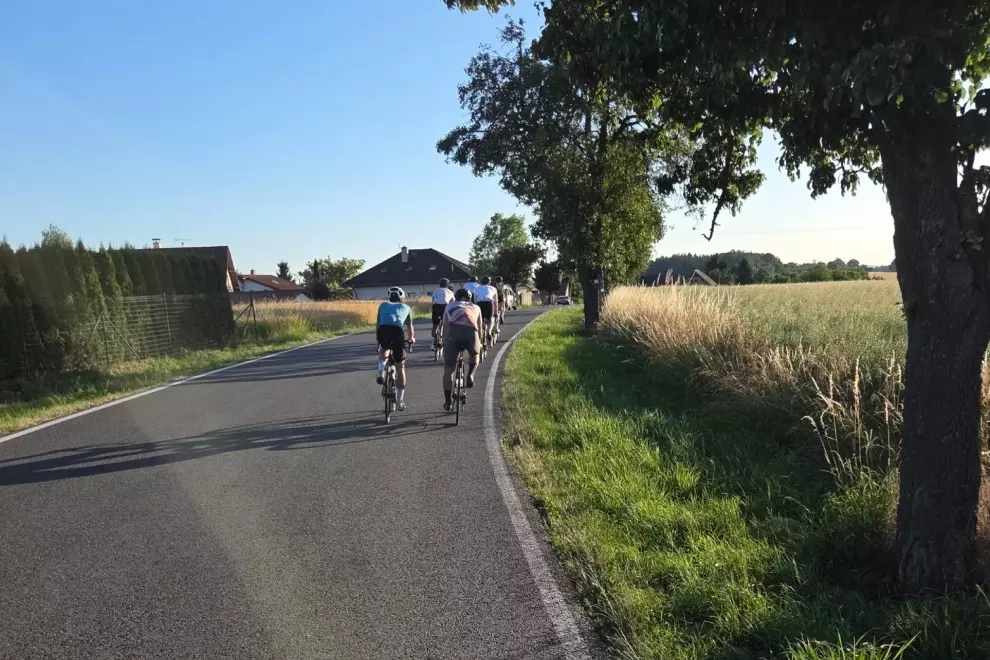What is aerodynamic drag
Don’t skip this part as it will help you to understand why you might consider buying a different bike or helmet to make your ride more efficient and comfortable. The aerodynamic drag consists of two fundamental forces: pressure drag and skin friction drag. The first kind of resistance is created as you hit the air particles with your body and bike during the ride. The particles get compressed and then again spaced out. The drag is the difference between these two air pressures. Aerodynamic shapes help to diminish the pressure drag by minimising the air pressure while allowing the air to flow smoothly around you.

Another quantity to consider is the skin friction drag. This is about how the air particles are moving around your body and over the air layers around you. Going for the right surface is a good way to decrease the drag, which is well-known to golf player who use balls with dimples. Similar technology has been used on certain parts of cycling kits to improve the performance of time trial riders.
Why minimising aerodynamic drag is good for you
Not only fast riders but anyone can benefit from lower drag. The truth is that if you increase speed from 20 km/h to 40 km/h, the drag won’t be twice as high, but almost eight times higher. However, even at a speed of around 20 km/h, you’ll spend as much as half of your entire power output to overcome the aerodynamic drag. The slower you go the more time you need to get from one point to another, and that’s why being aero will help you save energy.
So how can I save power?
There are several ways to reduce aerodynamic drag that can be used even by a weekend rider. Obviously, all tests unveiling the secrets of bicycle aerodynamics were carried out by professional cyclists on specially designed circuits, but the scientific findings can help ordinary riders like us too. The most significant parts that can give you some extra speed (or save your energy) are the bike, helmet, clothing and riding position. Let’s explore this in more detail.

Bicycle
According to several studies, the bike is responsible for up to 30 per cent of aerodynamic drag. During a test on a circuit, a pro cyclist was up to three minutes faster on an aero-designed bike than on a conventional race bike. Additionally, you can get some extra time by using appropriate components, such as aero handlebars, or by swapping your rim brakes for disc brakes. They brake more efficiently and also have remarkably lower drag. Another aspect to consider are the wheels, which are way more complicated to explain, so we’ll come back to them some day in the future.
Helmet
Several tests have shown that time trial helmets can save up to one minute on a 40km circuit. Having a reputation of non-comfortable gear anyone would like to avoid buying, helmets were not very popular in the past, but things have changed substantially. Today several manufacturers offer TT helmets that will fit you perfectly and make you a few seconds faster.

Cycling kit
Three years ago, Team Sky introduced their vortex cycling kit for the Tour de France, which instantly caused controversy because the rules say that riders are forbidden to wear items designed to enhance their performance by reducing air resistance or modifying the rider’s body. That’s exactly what the new Castelli skinsuits were doing according to some rival team leaders. While most of us will probably not get our hands on a professional kit, it’s good to know that spandex will make you up to 2 minutes faster on a 40km-long circuit in comparison with loose shirt and pants.
Perfect position
The importance of the position was perfectly demonstrated in a funny video by stuntman Michael Guerra who overtakes other riders just by reducing drag by adopting an aerodynamic Superman-like pose.
Even though this is not the way we can ride for long, it explains how much effort it costs to move forward with drag caused just by our position behind the handlebars. It’s said that our body accounts for up to 80 per cent of the entire drag. The lower over the bars you get, the smaller the shape responsible for the final resistance will be. For example, when you ride with your hands on the hoods, your drag is 14 per cent higher than when you put your hands on the drops and lean over the bike. You can reduce it even more by stretching forward and sitting on the top tube, which is a position you can adopt when descending because it will hinder pedalling. Aero position is not an answer to everything because scientists have proven that altering your position on the bike will affect your breathing and performance. In other words, the less comfortable position you assume the weaker your overall performance parameters may be, including cadence, heart rate, or peak output. Everybody can find a position that works best for them, though, or at least take the drag into account during their future rides. We hope you’ll see the difference.




